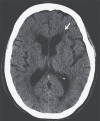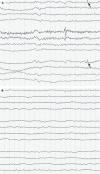Case 34-2022: A 57-Year-Old Woman with Covid-19 and Delusions
- PMID: 36351271
- PMCID: PMC9730912
- DOI: 10.1056/NEJMcpc2115857
Case 34-2022: A 57-Year-Old Woman with Covid-19 and Delusions
Figures



References
-
- Boyer EW, Shannon M. The serotonin syndrome. N Engl J Med 2005;352:1112-1120. - PubMed
-
- Hall RC, Popkin MK, Stickney SK, Gardner ER. Presentation of the steroid psychoses. J Nerv Ment Dis 1979;167:229-236. - PubMed
-
- Dalmau J, Graus F. Antibody-mediated encephalitis. N Engl J Med 2018;378:840-851. - PubMed
-
- Pilotto A, Masciocchi S, Volonghi I, et al. The clinical spectrum of encephalitis in COVID-19 disease: the ENCOVID multicentre study. June 20, 2020. (http://medrxiv.org/lookup/doi/10.1101/2020.06.19.20133991). preprint.
Publication types
MeSH terms
LinkOut - more resources
Full Text Sources
Medical
